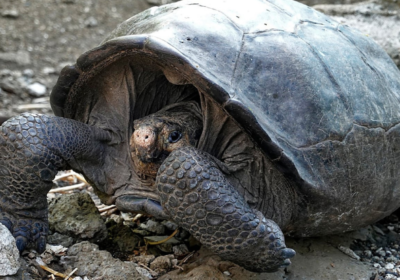Amazon, the largest tropical rainforest in the world, never stops to amaze wildlife explorers. Look at the assortment of birds, animals, and insects thriving in these forests, and we might feel surprised that some of them even exist. Many of these animals face the threat of extinction due to the rampant deforestation. Let us note down some of these unique animals of Amazon rainforests before they totally perish from the surface of the Earth.
Hyacinth Macaw
Hyacinth macaw, the largest of all macaws, is a native of the Amazon jungles. It is also the largest among all species of flying parrots. Hyacinth macaws are the calmest of all macaws. A huge body and calm nature has earned them the name ‘gentle giant.’

Macaws have a very colorful plumage, and are generally very noisy. They have a bright cobalt blue color all over their bodies, with a bright yellow around the eyes. Hyacinth macaws have a huge wingspan as well. One of the most peculiar aspects of macaws is that they like to eat the clay from the Amazon riverbanks. This clay is said to be useful in neutralizing the toxins in their diet. Isn’t it amazing to know their fitness secrets?
Sadly, the existence of this exotic bird is under threat. Illegal pet trade is the major reason behind this. Loss of their natural habitat also poses a threat to hyacinth macaws.
Poison dart frogs
Poison dart frogs, the name is enough to know what kind of frogs they are! A frog is an animal that we would least expect to be dangerous. But the poison dart frogs are one among the unique animals of the Amazon rainforest, which could be dangerous to us.
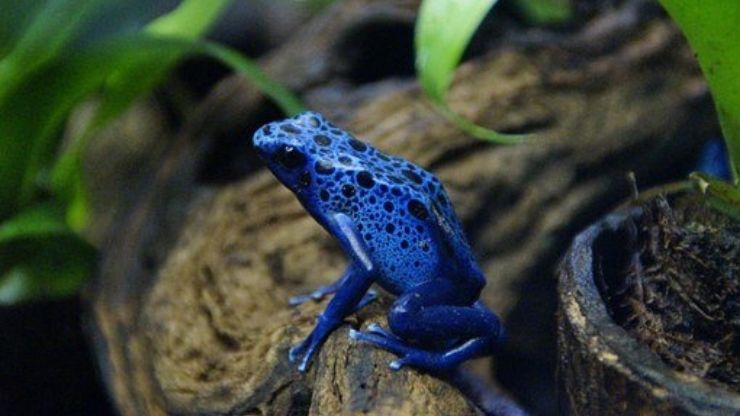
Poison dart frogs have brightly colored bodies. They have bright yellow, red, blue or black colored bodies. This bright color is nature’s way of warning the potential predators. With their bright bodies, these frogs issue a warning to everyone, “beware, we are poisonous.”
The poisonous secretions of these frogs were widely used by the Native Americans. They used to dip the tip of their arrows in these toxic secretions. This is how these frogs got the name ‘poison dart.’ Chemicals secreted from the skin of some poison dart frogs have medicinal value as well.
Pink river dolphin
Pink river dolphin or Amazon River dolphin is the largest of all river dolphins. It is very commonly found in the basins of the Amazon River. These dolphins live only in freshwater. Only the male river dolphins have a pink color. As the male dolphins grow up, they acquire a pink color. This is believed to be due to the scar tissues from fights with other dolphins.
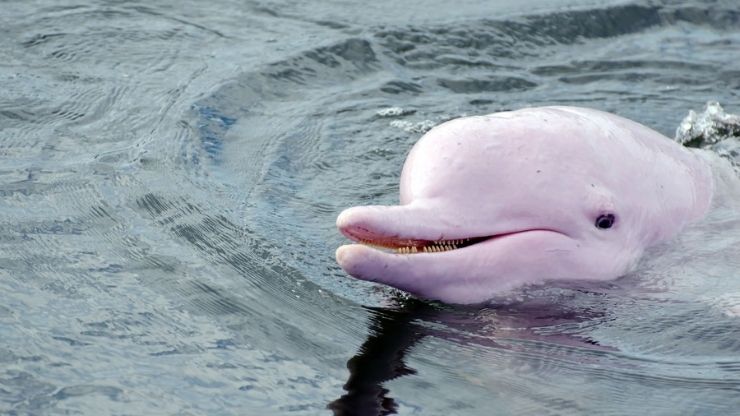
During the wet seasons, these pink river dolphins can be found abundantly in the flooded forests of Amazon. They have unique bodily features which make them very agile. Unfused neck vertebrae help them to bend their body skillfully, and the long snout helps them to catch fish from tiny crevices. They can swim upside down as well, resembling a professional swimmer!
Pink river dolphin is one among the unique animals of Amazon rainforests, with some myths and legends attached to it. Legends say that these dolphins have the ability to shape-shift! They assume the form of handsome men and come to the villages during night in order to seduce women. Tribal people consider pink river dolphins as scared creatures, and abstain from killing or eating them.
Squirrel monkey
Squirrel monkeys are the residents of tropical rainforests, and are very commonly found in the Amazon jungles. As the name suggests, they are small in size. They have bodies covered with a thick coat of fur. They have large brains, and are very intelligent. The tail of a squirrel monkey is not prehensile. This means that they cannot grab things or hold on to branches using the tails, like other monkeys. Their tails are only to help them in maintaining balance.
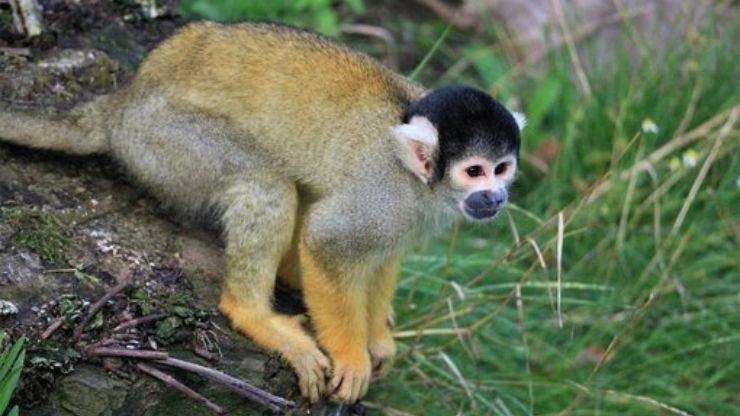
Squirrel monkeys have an excellent eyesight. They can distinguish colors, which helps them to identify the wild fruits. But their diet is not limited to just fruits and nuts. Squirrel monkeys are omnivores and they feed on insects and eggs as well.
These quaint looking monkeys are one among the unique animals of Amazon rainforests which do not face immediate extinction threats. Of course, loss of habitat is a grave issue for all species. But only two species of squirrel monkeys have been classified as ‘threatened.’
Eyelash viper
Eyelash viper is a species of venomous pit viper found in Central and South America. This snake is an inhabitant of tropical areas with dense foliage. Hence, they are abundantly found in Amazon forests. The most vivid aspect of this snake is the presence of extra scales over the eyes. These pointed long scales resemble eyelashes, and so the name eyelash viper.
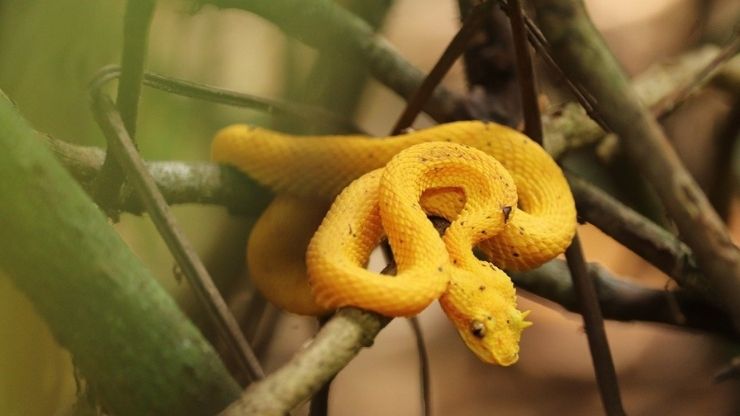
Eyelash vipers are comparatively smaller than other pit vipers. They can be found in all colors like yellow, red, green or pink. Like all pit vipers, they have a pair of heat sensitive organs called pits, which are located on either side of the head. These pits help the snakes to identify a potential prey.
Eyelash vipers are not aggressive in nature. They attack humans only in self-defense. But they are capable of inflicting fatal injuries to humans. This is a species of snake that explorers of Amazon jungles need to be wary of.
Golden lion tamarin
Golden lion tamarin or golden lion marmoset is one of the unique animals of Amazon rainforests which face an extinction threat. It gets the name from the bright reddish orange hairs covering its entire body. Its face is hairless, but the hairs around the face are extra-long and thick, giving it the appearance of big cats. This is how the golden lion tamarin got its name.
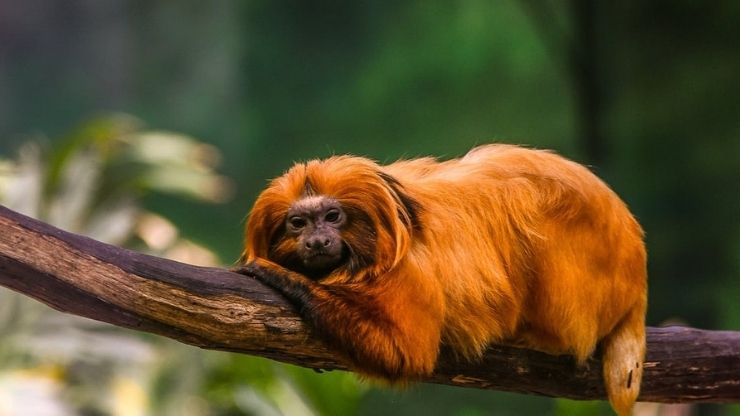
Golden lion tamarins are generally born in pairs. They live in groups, and all members of the group lend a hand in raising the young ones. Male monkeys too are actively involved in nurturing the young ones, and carry the little ones on their backs.
Golden lion tamarins are omnivores. They feed on fruits, insects or birds, and are very active during the day. They sleep in the hollows of tree trunks, and keep changing their resting place very often, so as to escape from predators. As for predators, humans are the biggest threats to the survival of these adorable apes. Illegal poaching and uncontrolled deforestation are real threats to these inmates of Amazon.
Jaguar
Jaguar is one of the most elegant of all big cats, and is an inhabitant of the Amazon rainforests. Jaguars are natives of the American continent. In appearance, jaguars resemble leopards. They have dotted furry bodies like the leopards, but are much bigger and stronger.

Jaguars are good swimmers. They have very strong jaws and a powerful bite. Jaguars can even tear apart the skulls of their prey. They are territorial by nature, and are fierce in protecting their territories. A symbol of power and majestic beauty, jaguar occupies a top spot among the animal predators.
But humans are a threat even to this powerful predator. Deforestation has caused a loss of their habitat, and a shortage in the number of prey animals. Illegal poaching is another grave matter that threatens their survival.
Black caiman
Black caiman is a reptile that resembles crocodiles and alligators. They are very huge, and can grow up to 16 feet long. Black caiman is the largest predator in the Amazon ecosystem. It has a dark colored body which allows it to easily camouflage.
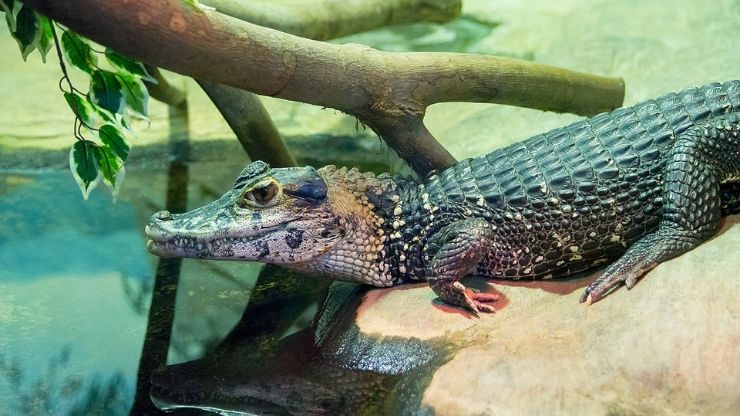
Black caiman is one of the unique animals of Amazon rainforests that explorers need to be cautious about. They are highly dangerous and ruthless in attacks. Black caimans feed on almost anything that comes their way including snakes, turtles or even birds. They love to sunbathe with their mouths wide open.
Black caimans are also not free from human threats. Human hunt them down for their meat or skin. Leather made from the skin of black caiman is exotic and expensive. Habitat loss is also a threat to the existence of caimans.
Piranha
Piranhas have a deadlier image in our minds than they actually are, thanks to some Hollywood movies. Movie makers picturize piranhas as vicious predators lurking in the rivers of South America. Well, they are natives of the Amazon basin in South America, and they do have a predatory nature. But there the story ends!

The word piranha means ‘tooth fish’ in Brazilian local language. Piranhas have very sharp teeth. Maybe it is these teeth that gave them the ferocious image. These razor-sharp, pointed teeth and strong jaws make them capable of powerful bites. But piranhas do not entirely depend on animal diet. Apart from other animals and fish, they feed on leaves and fruits too. There are some piranha species which are entirely vegetarians as well.
Contrary to popular belief, piranhas are not man eaters. Even with their powerful bites, they are not strong enough to rip apart a human body, unless it is a dead body being attacked by a school of piranhas. Although piranhas do attack humans, they cause minor injuries in most cases.
Green anaconda
Like the piranhas, anacondas too have given us many nightmares. Green anaconda is one of the longest and heaviest snakes in the world. Though the title of longest snake was bagged by the reticulated python, green anaconda is the heavier of the two. Green anacondas can grow up to 29 feet long, and can weigh up to 95 kilos.
Green anacondas have an olive green colored body, with black patches all over it. They live in streams, marshes and rivers. They are slow over land, but are fast swimmers in water. Green anacondas are commonly found in the Amazon River basin.
Green anacondas feed on smaller animals, birds and other reptiles. They use the constriction method for killing their prey. Once the anaconda catches its prey, it coils around the body of the prey and suffocates it to death. Female anacondas are found to have a larger diet than males. They can go without food for several weeks after consuming a large prey. Though anacondas are thought to be man-eaters, there is very little evidence of such mishaps.
Amazonian giant centipede
Amazonian giant centipede, one of the unique animals of Amazon rainforests, is remarkable for its size. It is the largest of all centipedes, and can grow up to 30 centimeters long. These centipedes are commonly found in the forests of South America. Giant centipede is also called Peruvian giant yellow-leg centipede.
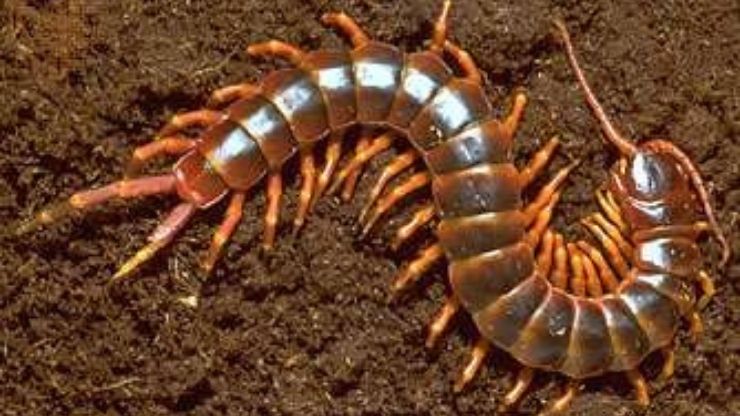
These giant centipedes feed on insects, spiders, or even bats, lizards, or frogs. They are known to capture animals bigger than their body size. After capturing the prey, the giant centipede injects a strong venom into its body. Giant centipede bites are rarely fatal for humans, though it causes severe pain and swelling.
Apart from the aforementioned animals, there are millions of rare and exotic animals hidden in the jungles of Amazon. Do you wish to know some more facts about the Amazon rainforest? Please find it here. Or try answering a few quiz questions about the Amazon rainforest.




